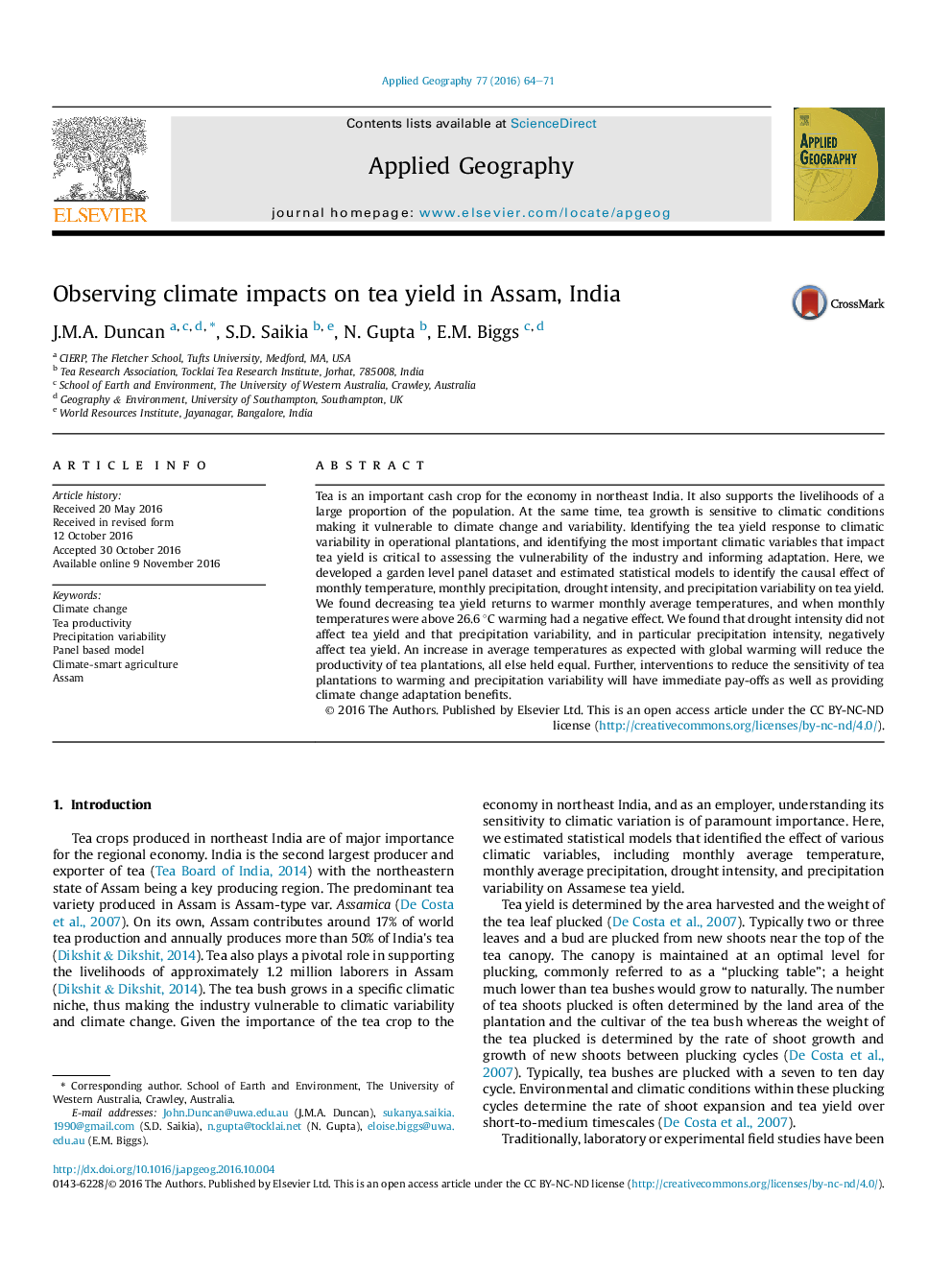| Article ID | Journal | Published Year | Pages | File Type |
|---|---|---|---|---|
| 6458497 | Applied Geography | 2016 | 8 Pages |
â¢Panel dataset developed to identify causal effect of climate variation on tea yield.â¢Decreasing tea yield returns to warmer monthly average temperatures was observed.â¢Precipitation variability, and in particular intensity, negatively affect tea yield.â¢Mechanism that lead to precipitation reducing yield to decide adaptation strategies.
Tea is an important cash crop for the economy in northeast India. It also supports the livelihoods of a large proportion of the population. At the same time, tea growth is sensitive to climatic conditions making it vulnerable to climate change and variability. Identifying the tea yield response to climatic variability in operational plantations, and identifying the most important climatic variables that impact tea yield is critical to assessing the vulnerability of the industry and informing adaptation. Here, we developed a garden level panel dataset and estimated statistical models to identify the causal effect of monthly temperature, monthly precipitation, drought intensity, and precipitation variability on tea yield. We found decreasing tea yield returns to warmer monthly average temperatures, and when monthly temperatures were above 26.6 °C warming had a negative effect. We found that drought intensity did not affect tea yield and that precipitation variability, and in particular precipitation intensity, negatively affect tea yield. An increase in average temperatures as expected with global warming will reduce the productivity of tea plantations, all else held equal. Further, interventions to reduce the sensitivity of tea plantations to warming and precipitation variability will have immediate pay-offs as well as providing climate change adaptation benefits.
